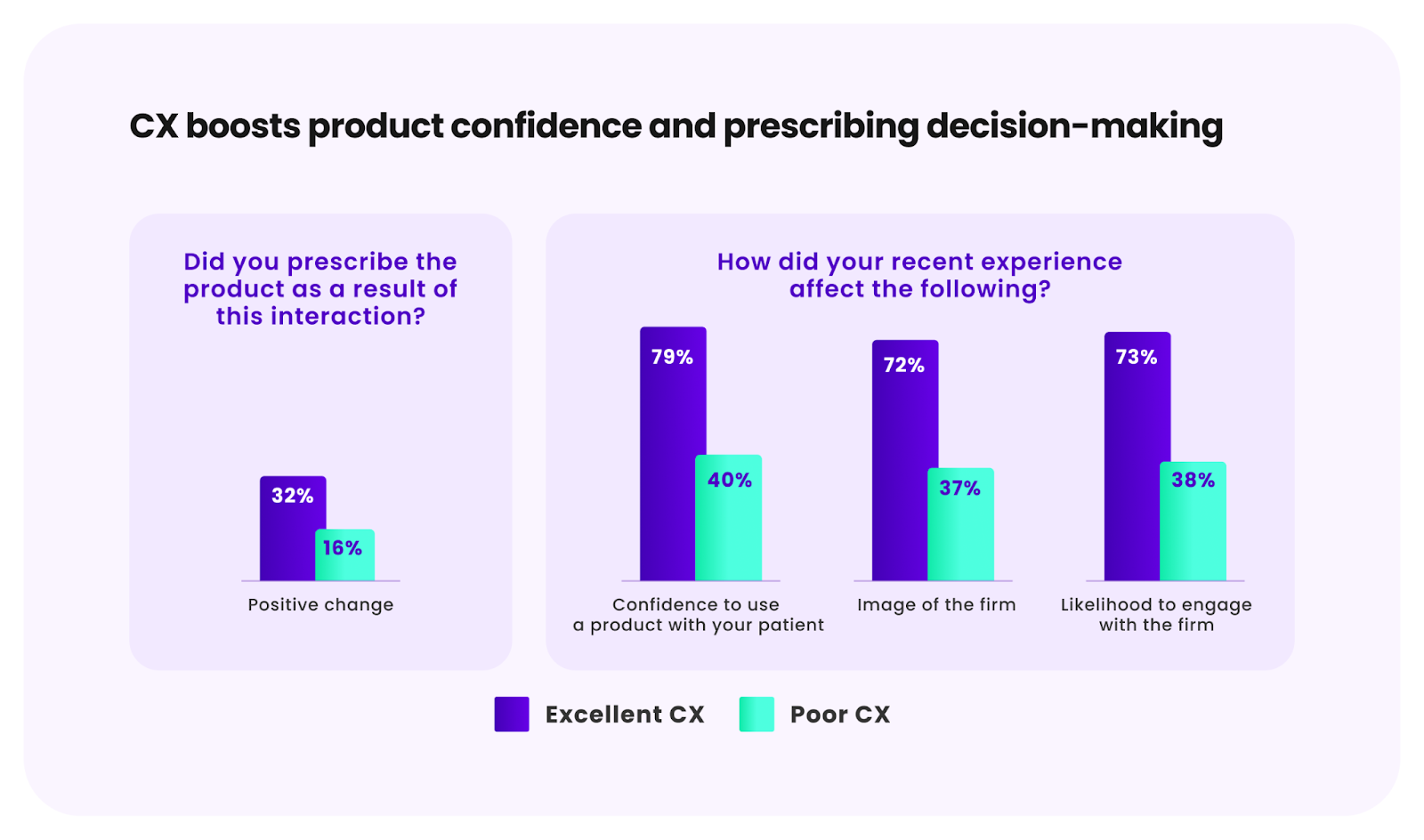Getting feedback from healthcare professionals (HCPs) is easy enough – the tricky part is doing something meaningful with it. Here’s how pharmaceutical companies can effectively bridge the gap between feedback and genuinely improved customer experiences.

Poor customer experiences significantly reduce future healthcare professional (HCP) engagement. Excellent experiences, by contrast, can increase engagement dramatically – up to 79%.

Exceptional experiences don’t just benefit immediate interactions. They build lasting trust, enhance your reputation, and improve prescribing confidence. This means HCPs are more likely to share valuable content with peers, seek further information from your company, and recommend your materials to patients.
DT Consulting’s Customer Experience Quotient® (CXQ®) highlights exactly how pharma interactions rank from the HCP perspective:

Over one-third of HCPs want more or different channels than what pharma typically provides. Surprisingly, 14% of HCPs don't even think about whether current engagement channels match their needs, suggesting pharma should proactively clarify and expand available options.
Companies need to critically evaluate and diversify their digital and physical channels to align better with what HCPs genuinely prefer, not just what the industry assumes.
HCP preferences vary widely:
Focusing your strategy on these balanced adopters is a smart move. Engage them with well-designed interactions tailored to their real-world needs and preferences.

To make sure your team acts on feedback, clear metrics must be part of your regular workflows:
When feedback leads to improvements, share these wins clearly and consistently with your HCP community. Showing that their input genuinely matters reinforces trust and encourages ongoing engagement.
Acting on feedback isn’t about ticking boxes – it's about building genuine relationships. At Screver, we specialise in capturing insights that empower pharma teams to enhance their customer experiences.